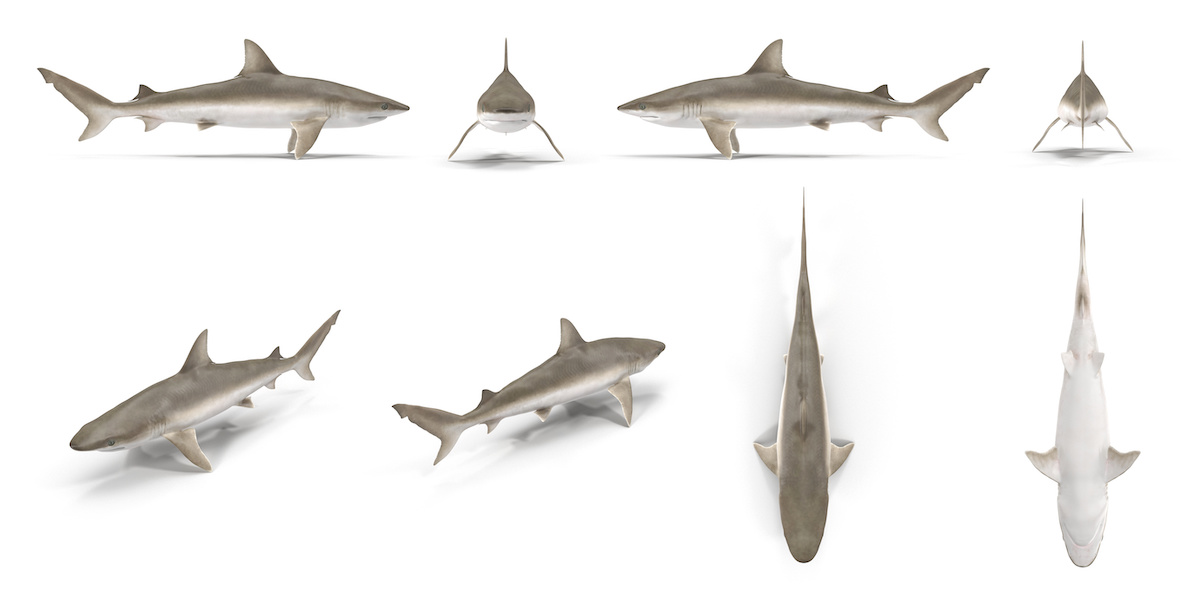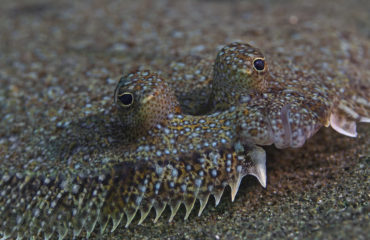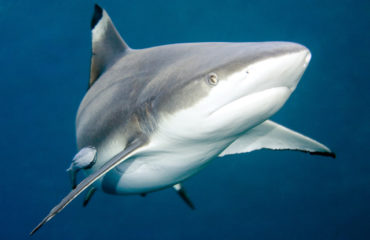Ever been shark fishing! It is quite a fishing adventure. A Charleston South Carolina saltwater fishing charter service can take you and your family or friends out focusing on shark fishing in the Charleston waters.
This is a continuation on our What Sharks are in the South Carolina Waters Series. The other sharks highlighted in this series are:
- Hammerhead (Bonnethead are in SC)
- Blacktip
- Sharpnose
- Lemon
Appearance
The blacknose shark is grey or greenish-gray colored. Their belly is white or yellow-colored. The tips of the blacknose dorsal fin and upper lobe of caudal fin are black or dusky-colored. The fin has a black spot (especially pronounced in young animals) below the snout. That is why is it called blacknose shark.
Their skin is covered with dense, overlapping scales called denticles. Each denticle has 3 to 7 longitudinal ridges and 3 to 5 marginal teeth.
They have elongated, rounded snout, large eyes and slender body. The blacknose has 5 short gill slits.
They have 12 to 13 rows of teeth in the upper jaw and 11 to 12 rows of teeth in the lower jaw. Their teeth are narrow, triangular and serrated on the edges.
Size
The Blacknose shark can reach from 4.1 to 4.6 feet in length and 22 pounds of weight.
Habitat
They hang out in inshore coastal waters from North Carolina to Brazil and are common in bays and lagoons.
During the summer, blacknose sharks migrate toward the north (or away from the shore) and during the winter they return back to the south (or close to the shore).
Young blacknose sharks live in shallow coastal water filled with sea grass and corals. Adult blacknose sharks live away from the coast, on depth of 30 feet.
Diet
They feed mostly on small fishes and invertebrates and sometimes octopus. They fall prey to larger sharks.
This shark is a quick swimmer and voracious predator that feeds on fish (pinfish, puffer fish, anchovies, porcupine fish, and box fish), and cephalopods (octopus).
Species
The blacknose shark belongs to the family of requiem sharks. It can be found in the warm tropical waters of North Atlantic from the North Carolina to the Brazil.
Similar Species: Atlantic sharpnose shark, R. terraenovae (lacks dark snout tip)
Near Endangered
The blacknose shark is listed as near threatened, which could mean that it may become endangered in the near future.
The natural enemies of the blacknose shark are large species of sharks such as dusky shark.
Aggressive
Blacknose sharks typically don’t attack humans. When faced with divers on their territory, these sharks show signs of aggressions which are:
- arched back,
- low-positioned pectoral fins and raised head.
Life expectancy
Male blacknose sharks have a life expectancy from 4.5 to 9 years. Females can live from 10 to 16 years.
Reproduction
From May to July is the mating season of blacknose sharks.
Female gives birth to 3 to 6 live sharks (viviparous species) after 10 to 11 months of gestation. Blacknose sharks in the Northwestern Atlantic breed once every two years.
If you are looking to enjoy a day of fishing with friends and family, call us today to reserve a saltwater fishing charter. Our equipment is top of the line and well maintained for your safety and enjoyment. We take great pride in creating memory-making experiences with families and friends.
Get your family together and Book your next fishing charter today!
Step on board with All In One Charters; Charleston’s top inshore fishing charter company. We specialize in customized inshore fishing charters; as well as nearshore, and offshore fishing. Join Capt. Ronnie for an action-packed day of saltwater fishing, exploring Charleston’s endless inshore waterways in search of top species like Red Drum, Trout, Flounder, Black Drum, and Sheepshead, as well as the chance of some exciting battles against big Bull Reds, or Hammerhead Sharks for some added adrenaline. Book your fishing charter today or call at 843-330-3272.



